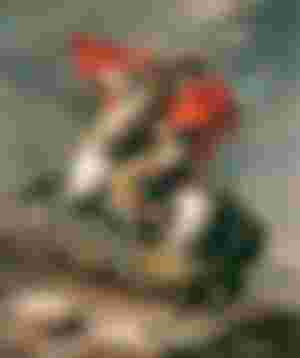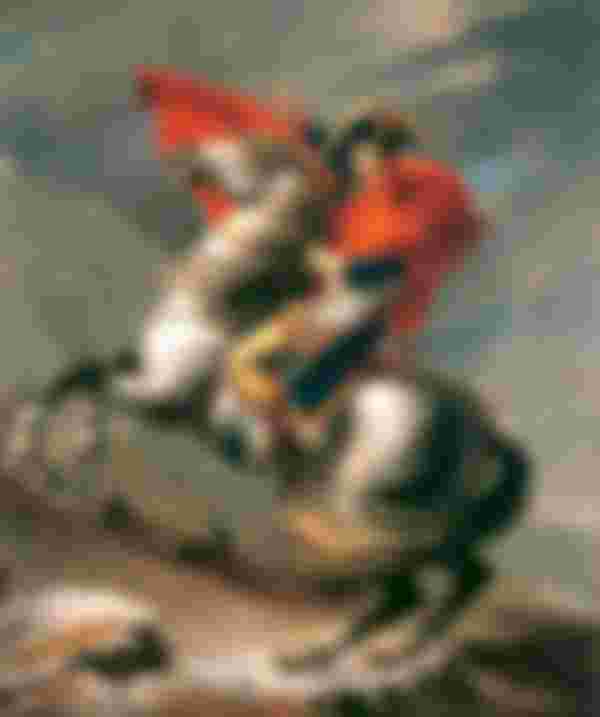The horse is one of those animals that can leave few indifferent - everyone who has met this beautiful and noble animal at least once in their life knows what we are talking about. And we will agree - if we are not impressed at first sight by the strength and beauty of his body, we will certainly be enchanted by his eyes and their depth - we see in them gentleness and benevolence, we feel trust and friendship that has been built for millennia in mutual respect and love . We will be enchanted by the dignity, passion and indomitability of this being who speak of his wild origins and exciting past.
About the origin and history of horses
Given that one of the basic characteristics of today's horse is precisely its strength and size, it is a bit hard to believe the scientific explanation that its ancient ancestor, who inhabited today's Europe and North America more than fifty million years ago, weighed some fifty pounds and was barely larger than today's fox. These primordials are thought to have spread across Earth over millions of years, experiencing the development of numerous species and subspecies due to evolutionary changes, only to become extinct in America after the Ice Age, for completely unexplained reasons. But the horses that remained in the area of Europe and Asia, continued their evolutionary development in the newly created climatic conditions, inhabiting the endless steppe expanses united in herds and thus welcomed the encounter with man.

The man immediately recognized in the horse an animal that would not only serve him as a source of food or help in the field. Civilizations will be built and destroyed on his back, continents will be conquered, peoples and cultures will be connected. The first use of horses in war and in the field was recorded in the Middle East during the period from 3500 to 3000 BC. Kr. They served Sumerians, Babylonians, Assyrians to pull chariots, they were important to the Egyptians, and they were of special importance for the Greeks and Romans, in whose war conquests they often played a crucial role. The horse, albeit wooden, also served the Greeks as a tactical cunning to defeat the Trojans. Thanks to conquests with the help of fast and strong horses, many nomadic peoples of the Eurasian steppes, Mongols, Huns, Avars have been recorded in history. readily welcomed by both European settlers and Indians.

The close and intense companionship of man and horse has given birth to their deep friendship and trust, so the most famous members of the animal world are among the horses. One of the most famous is probably Bukefal, a faithful companion of Alexander the Great, so named because of the white mark on his forehead in the shape of a bull's head. Bukefal enjoyed the highest state honors, and after his death a city of the same name in India was founded in his honor.
Marengo, the Arabian horse of Napoleon Bonaparte whose emaciated figure adorns one of Napoleon's most famous portraits, accompanied his master in almost all battles, though Napoleon reportedly could not boast of the most enviable riding skill. Marengo was so famous that his skeleton is still kept in the British Military Museum.

Horses are also closely associated with various deities. Greek mythology connects them with Apollo, Zeus, Poseidon and Athena. Horses pulled a cart with the Greek sun god Apollo, and a similar motif is found in Hinduism where Surya, the sun god, rides in a chariot in which seven horses are harnessed, and in Christianity where horses pull a cart with Saint Elijah the Thunderer. Poseidon, the supreme god of the sea, is ridden by fast-footed horses. The mythological figure of the Centaur is presented as a creature with the body of a horse, and the hands and head of a man. Poseidon's and Medusa's son Pegasus is presented as a winged horse with the help of which Bellerophon defeated the monster Chimera. In these and similar motifs, the horse is a symbol of the body - matter ruled by the rider, or spirit.
The Celts especially worshiped the goddess Epona, the protector of horsemen, who the ancient Romans also took as the goddess of protection of horses and donkeys. The horse also plays a significant role in the legends of Islam, and the horse Burak has a particularly important place, on whose back the Prophet Muhammad ascended to heaven. The importance and connection between horses and their owners is also evidenced by the fact that in many cultures they are buried with their masters.
Horse breeds
When we talk about horses, we must inevitably mention the term breed. The division of horses into breeds relies on two basic types of horses: Oriental and Occidental, ie warm-blooded and cold-blooded, although some single out small horses, ponies, into a special group. These determinations, however, do not refer to the body temperature of the horses, but to their temperament and physique. Cold-blooded horses are calm and phlegmatic, with a stocky body, a rougher head and a shorter and thicker neck, and can weigh from 650 to 1300 kg. Warm-blooded horses, on the other hand, stand out with their liveliness, speed and constant desire to move, as well as a more elegant body with a smaller head and a thinner neck, with an average weight of 300 to 650 kg.
There are hundreds of breeds of horses, and here we will mention as an example only a few of the most famous and most represented, which due to their qualities are often found in the genealogy of many other breeds.

The romantic Arabian horse is considered one of the most beautiful in the world of horses. The word arab in Semitic means desert, which denotes this animal as a steppe and desert horse adapted to life in special conditions. It originates from the Middle East, ie the area of today's Saudi Arabia, Egypt and Yemen. To the Arabs, the horse is the noblest animal and enjoys almost as much respect as the noble man. Bedouin legend says that the Arabian horse was created from the south wind to the glory of the Earth, and was given a wingless flight. Another story says that in the beginning God gave Ishmael, the son of Abraham, a horse as a reward for his father’s faith and devotion to God.
According to Arabic traditional requirements, a good Arabian horse must have a properly built body, short and mobile ears, narrow head, nostrils like lion's jaws, beautiful, dark eyes of a woman in love, curved and long neck as a symbol of courage and pride, broad chest and forehead to he would receive the blessing of Allah, a narrow back, camel-like muscles, a sparse mane and a rich tail. A reflection of the strength of the star's horse is on his forehead. The most common color of this horse is white, although it can be found in all other colors.
The Lipizzaner horse was named after the town of Lipica in Slovenia, where in 1580 the Habsburgs began breeding it. Due to the war with France in 1805, the Lipizzaners were moved from Lipica to Đakovo and have remained there to this day. The Lipizzaner horse is characterized by nobility, intelligence and endurance. Due to its extremely lively and high, graceful gait, this beautiful horse is often used for dressage riding. The most common color is white and grayish-white, and there are also dorata (dark red) and crow (black), while the tool (red) is rare.
The English thoroughbred was created by crossing an Arabian stallion and an English mare sometime in the XVIII. century, so he inherited from his father the speed of movement, harmony and grace. Today it is one of the most excellent and versatile breeds of horses in the world, which equally serves in dressage and show jumping competitions, as well as in hunting and recreational riding. The most common colors are crow, dorata, tool and gray, but white markings on the head and legs are also allowed.
Therapeutic riding
Today, when horses serve less and less in the field, when there are no more denim and cowboys, when we see knights and warriors on horses only in movies, and horsepower has long been replaced by fast and expensive cars, the horse still has an irreplaceable role that once again confirms its nobility and gives it a new dimension. Horseback riding is, of course, one of the favorite forms of recreation for many, but for people with disabilities it is much more than that. Contact with an animal that has no prejudice towards their disability, its strength, warmth and rhythm of movement, but above all contact with the hitherto unknown feeling of freedom and mobility that the horse provides, is invaluable for these people and an important boost to their self-confidence.




Arabian horses are special and very very expensive, one million dollar for one horse. Yes, it's true!